Abstract
MS2 coliphage (ATCC 15597-B1) has been proposed by the U.S. Environmental Protection Agency as a surrogate for enteric viruses to determine the engineering requirements of chemical disinfection systems on the basis of previous experience with chlorine. The objective of this study was to determine whether MS2 coliphage was a suitable indicator for the inactivation of enteric viruses when ozone disinfection systems were used. Bench-scale experiments were conducted in 2-liter-batch shrinking reactors containing ozone demand-free 0.05 M phosphate buffer (pH 6.9) at 22 degrees C. Ozone was added as a side stream from a concentrated stock solution. It was found that an ozone residual of less than 40 micrograms/liter at the end of 20 s inactivated greater than 99.99% of MS2 coliphage in the demand-free buffer. When MS2 was compared directly with poliovirus type 3 in paired experiments, 1.6 log units more inactivation was observed with MS2 coliphage than with poliovirus type 3. It was concluded that the use of MS2 coliphage as a surrogate organism for studies of enteric virus with ozone disinfection systems overestimated the inactivation of enteric viruses. It is recommended that the regulatory agencies evaluate their recommendations for using MS2 coliphage as an indicator of enteric viruses.
Full text
PDF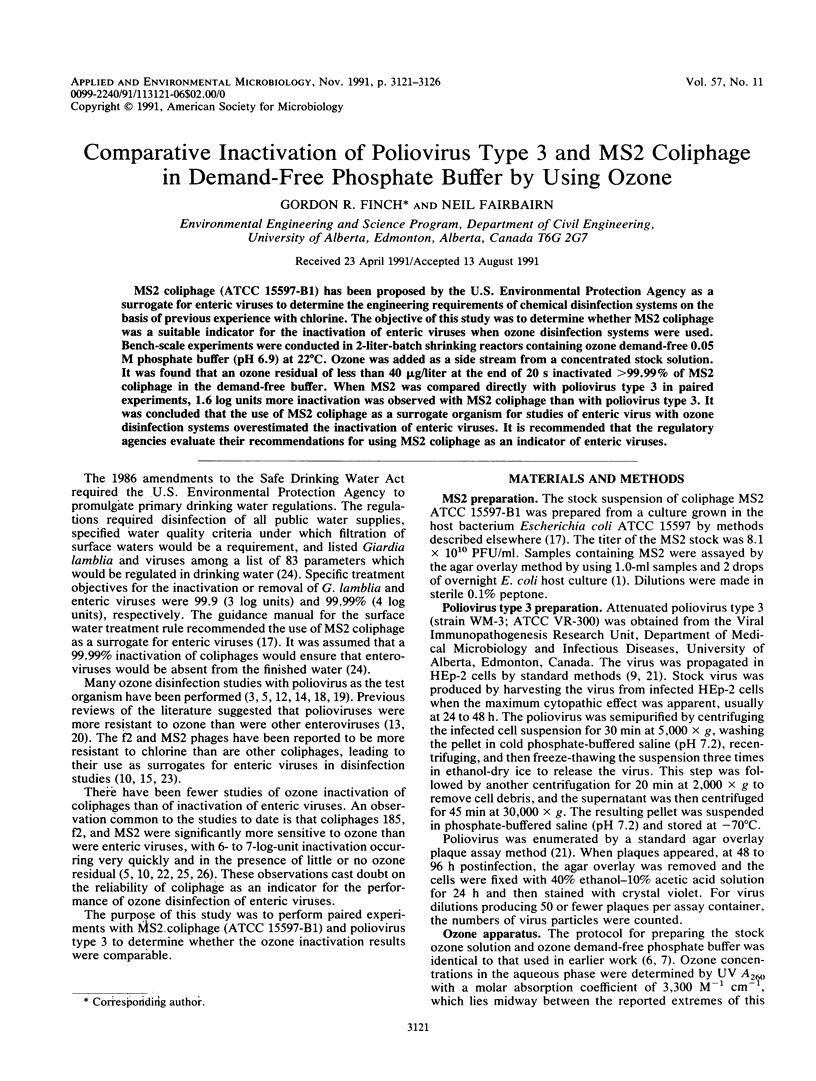
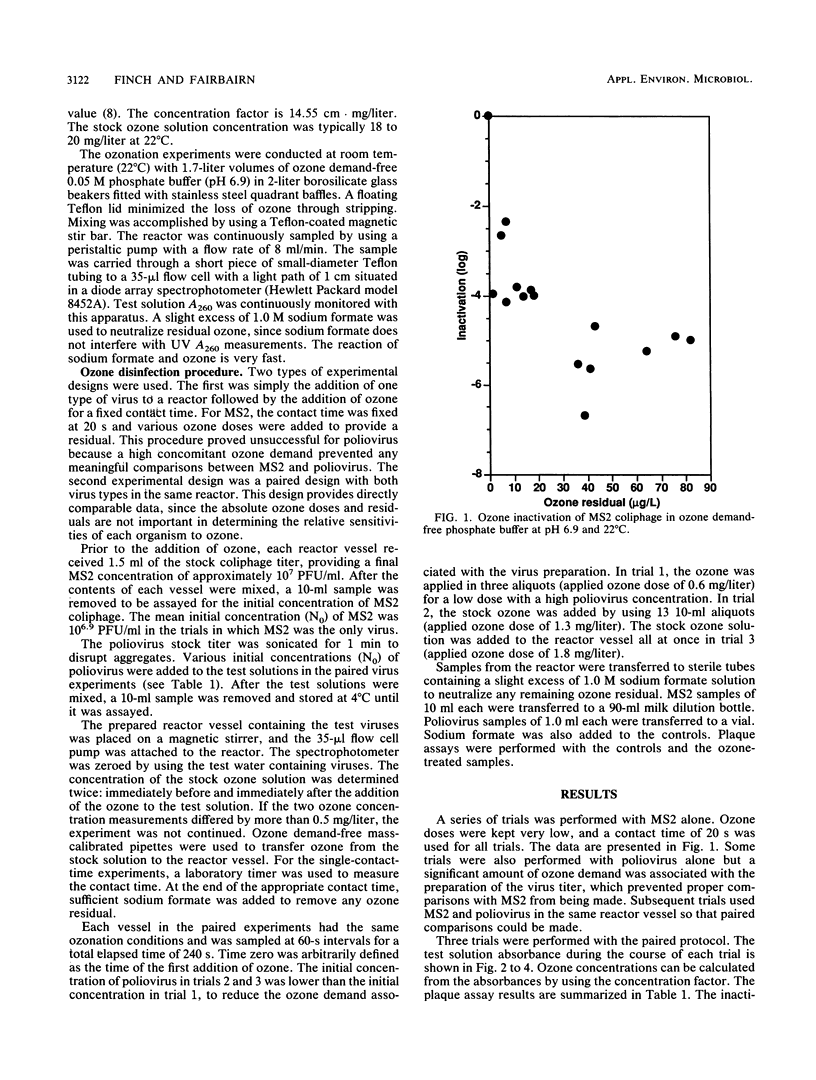
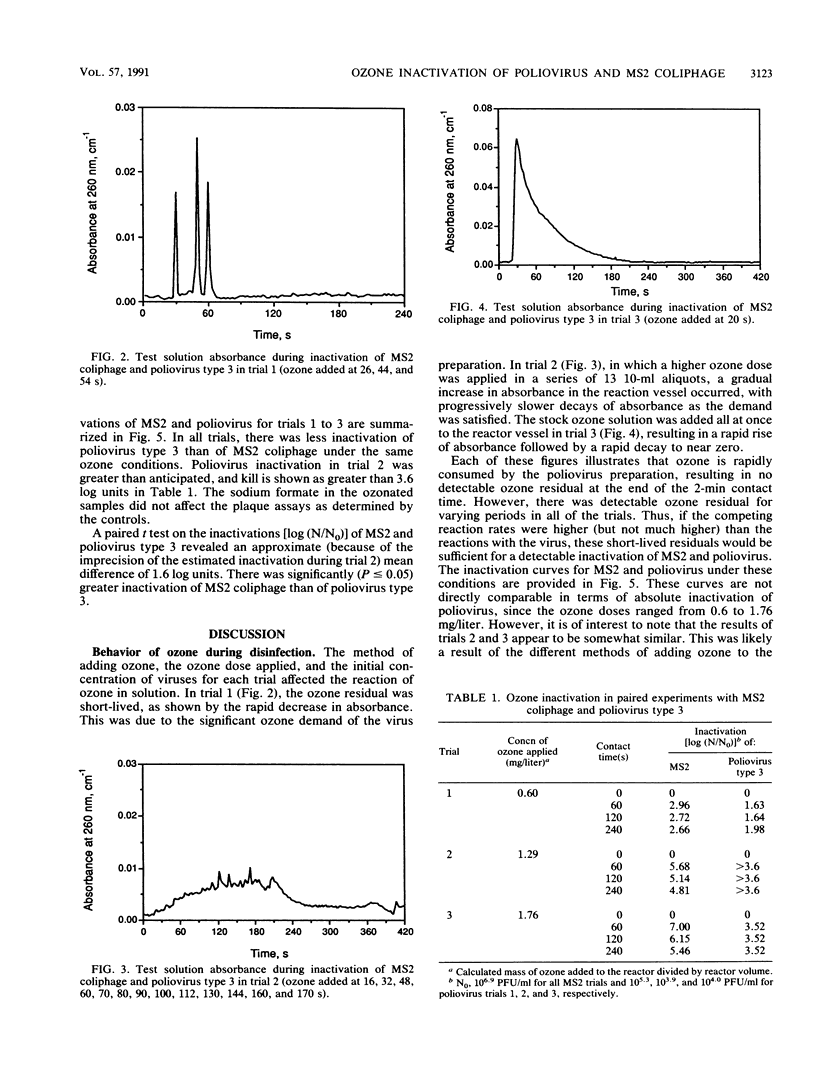
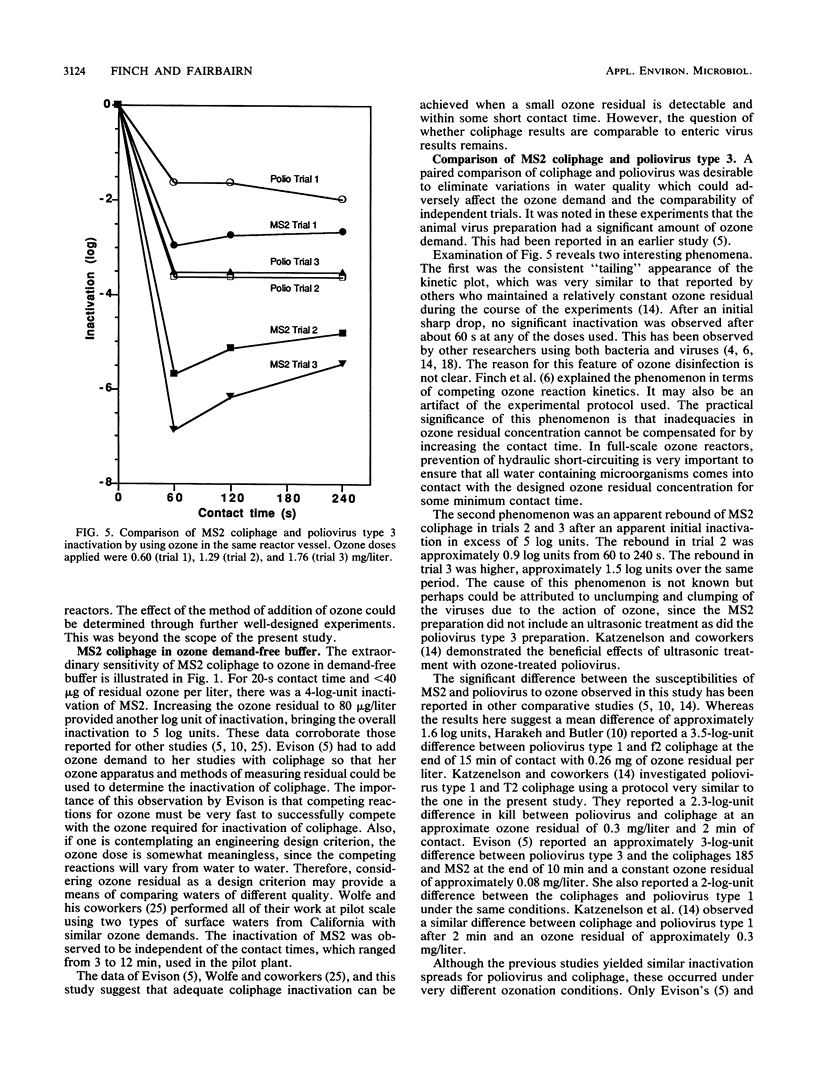
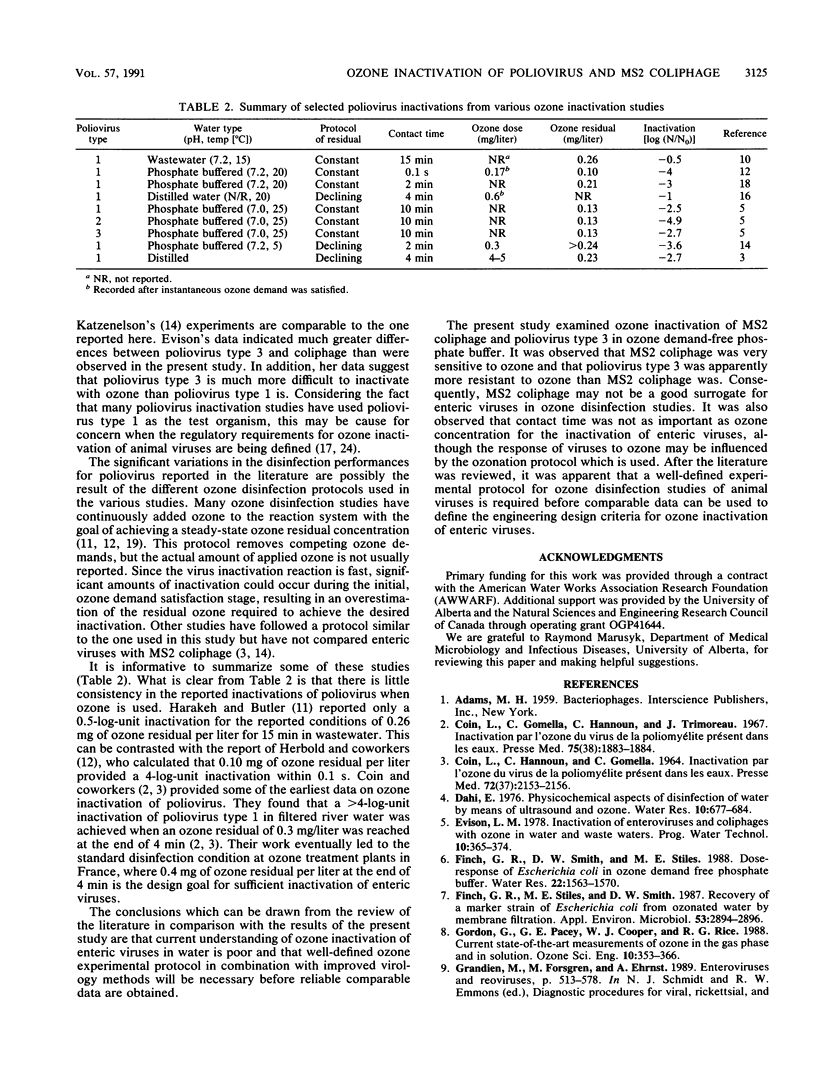
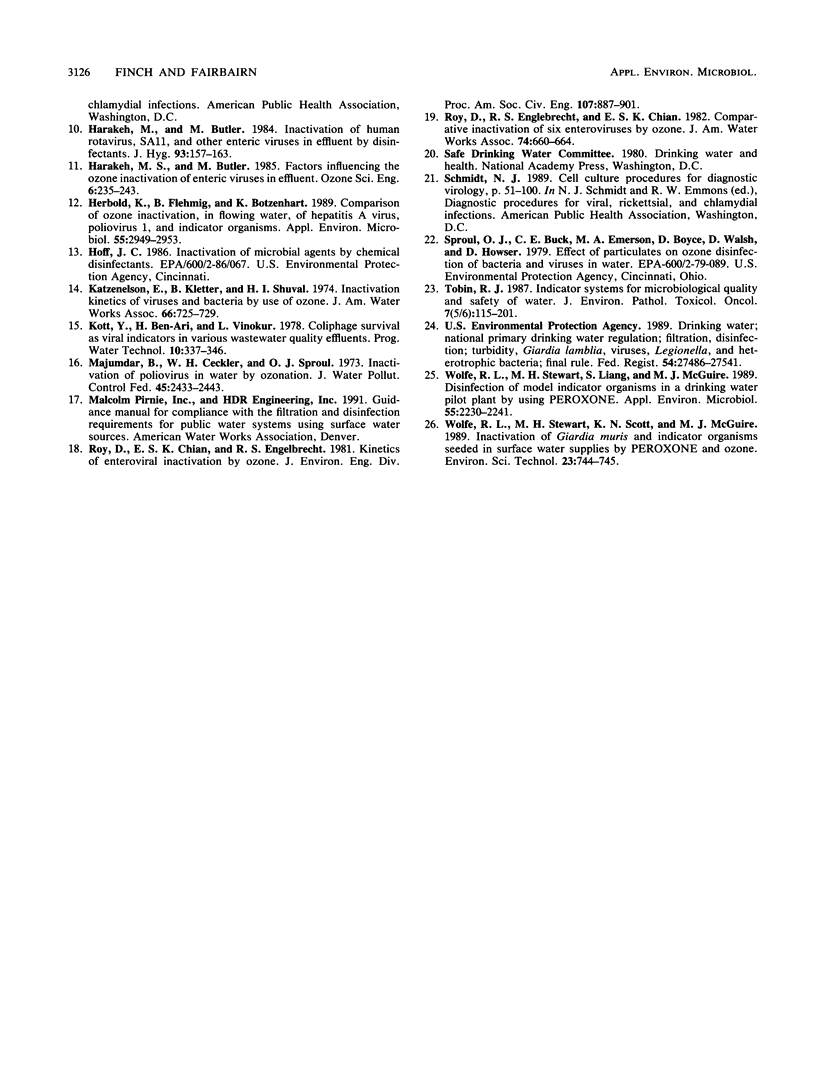
Selected References
These references are in PubMed. This may not be the complete list of references from this article.
- COIN L., HANNOUN C., GOMELLA C. INACTIVATION PAR L'OZONE DU VIRUS DE LA POLIOMY'ELITE PR'ESENT DANS LES EAUX. Presse Med. 1964 Sep 12;72:2153–2156. [PubMed] [Google Scholar]
- Coin L., Gomella C., Hannoun C., Trimoreau J. C. Inactivation par l'ozone du virus de la poliomyélite présent dans les eaux. (Nouvelle contribution) Presse Med. 1967 Sep 23;75(38):1883–1884. [PubMed] [Google Scholar]
- Finch G. R., Stiles M. E., Smith D. W. Recovery of a marker strain of Escherichia coli from ozonated water by membrane filtration. Appl Environ Microbiol. 1987 Dec;53(12):2894–2896. doi: 10.1128/aem.53.12.2894-2896.1987. [DOI] [PMC free article] [PubMed] [Google Scholar]
- Harakeh M., Butler M. Inactivation of human rotavirus, SA11 and other enteric viruses in effluent by disinfectants. J Hyg (Lond) 1984 Aug;93(1):157–163. doi: 10.1017/s0022172400061040. [DOI] [PMC free article] [PubMed] [Google Scholar]
- Herbold K., Flehmig B., Botzenhart K. Comparison of ozone inactivation, in flowing water, of hepatitis A virus, poliovirus 1, and indicator organisms. Appl Environ Microbiol. 1989 Nov;55(11):2949–2953. doi: 10.1128/aem.55.11.2949-2953.1989. [DOI] [PMC free article] [PubMed] [Google Scholar]
- Majumdar S. B., Ceckler W. H., Sproul O. J. Inactivation of poliovirus in water by ozonation. J Water Pollut Control Fed. 1973 Dec;45(12):2433–2443. [PubMed] [Google Scholar]
- Wolfe R. L., Stewart M. H., Liang S., McGuire M. J. Disinfection of model indicator organisms in a drinking water pilot plant by using PEROXONE. Appl Environ Microbiol. 1989 Sep;55(9):2230–2241. doi: 10.1128/aem.55.9.2230-2241.1989. [DOI] [PMC free article] [PubMed] [Google Scholar]


